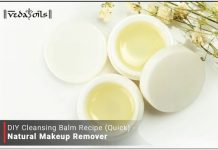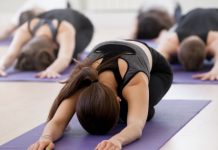Enamel is the hard layer surrounding the softer, more vulnerable parts of your teeth. It essentially serves as a protective layer between your teeth and the things you eat. But enamel isn’t impervious: acids and sugars found in various foods gradually wear it away.
While the enamel that wears away from your teeth can’t ever come back fully, you can make the enamel you still have stronger through remineralization. You can go about this in a number of ways, ranging from fluoride treatment to relatively minor tweaks to your lifestyle.


In the following lines, we’ll discuss the many methods for remineralizing your pearly whites. But first, we’ll quickly explain what remineralization is so as to improve your understanding of this topic.
Tooth Remineralization Explained (Briefly)
Did you know that you lose a bit of enamel every day and that you grow a portion of it back, too? As you eat, the acids and sugars in your food (from foodstuffs like milk, citric fruit, and so on) chip away at enamel bit by bit.
However, an inverse process makes up for the loss of enamel — to some extent. Eating foods rich in minerals like fluoride, phosphate, and calcium helps your teeth slowly restore their protective layer. Saliva also plays an especially important part in this process, as it covers teeth with the above-mentioned minerals (in addition to being antibacterial, of course).
This natural ebb and flow of saliva in your mouth should be even enough to keep the pH levels in your mouth stable. However, something like a particularly acidic or sugary diet can offset this equilibrium, leading to enamel damage and, eventually, tooth decay.
Ways to Remineralize Your Teeth
Now that we better understand what’s going on with your enamel, you can start improving your enamel and dental health in general.
The following tips on how to remineralize teeth will help you not only slow down the demineralization process but actually turn the tables and improve mineralization.
1. Consult Your Dentist
Before making significant changes in your life, you should first get a lay of the land, so to speak. The best way to do that is to consult a dental specialist. If you don’t have a dentist you use you should make an appointment with a new dentist. Your dentist will tell you how under-mineralized your enamel is and what measures you should take to improve the situation.
Depending on the state of your teeth, a dentist might recommend anything from slight changes to your oral hygiene to a more hands-on treatment process. We’ll cover the breadth of this spectrum, but it’s vital to have a specialist gauge the severity of your case.
2. Stimulate Your Saliva Production
As we already touched upon, saliva is very important for keeping your enamel well-supplied with minerals. To that end, coaxing your salivary glands to keep working will help your enamel maintain its integrity.
Besides drinking plenty of water, one of the best ways to keep the saliva flowing is to keep chewing. Chewing gum could be a great tool for that, for example, but most of it contains sugar, which is counterproductive to mineralization. Luckily, sugar-free gum is pretty easy to find nowadays, so you can buy that and circumnavigate that issue.
3. Get Treatment
If the situation is dire enough, getting your teeth treated with the help of a fluoride treatment dentist may be the only viable solution. The treatment should be effective enough to improve your situation, and it’s rarely expensive (in the ballpark of $20–$50). In fact, your insurance might cover it depending on the plan you have.
4. Stay Away From Acidic and Sugary Foods
If you’re big on sodas and fruit juices, it would be smart to cut down on those kinds of drinks. The same applies to candy, citric fruit like tangerines and oranges, and starchy foods such as rice, potatoes, and bread.
Alternatively, you should consider upping your calcium intake. One of the most popular ways to do that is to start ingesting more dairy products such as milk or yogurt. That said, lactose, commonly found in dairy, can also harm enamel. For that reason, it’s a good idea to get lactose-free or plant-based milk.
5. Use Toothpaste With Fluoride
Regular toothpaste works well enough to keep your teeth clean. But, it won’t cut it when it comes to keeping your enamel strong. Fluoride toothpaste, on the other hand, will perform that task much better.
To ensure the best results from using fluoride paste, make sure to brush at least twice a day. Floss every day to reach parts of your teeth that a toothbrush can’t.
Do You Need Tooth Remineralization?
The question probably on your mind right now is whether you even need to remineralize teeth in the first place. While most people would surely benefit from taking the above advice, it might not be necessary for everyone.
However, some demographics definitely should be mindful of their enamel and how they treat it. Namely, people with certain conditions face greater risks of enamel deterioration than others. If you’re dealing with any of the below conditions, you should look into remineralizing your teeth:
- Forms of gum disease like periodontitis or gingivitis that exposes more of your teeth to demineralizing substances;
- Any condition that calls for bridges, braces, or crowns, which compromise the contact points between them and the teeth;
- Xerostomia (mouth dryness) or anything that causes xerostomia;
- Frequently occurring cavities (one every year or two).
It’s also ideal to get exposed to plenty of fluoride early on in life in order to remineralize teeth naturally. The period between 6 months and 16 years of age is the most crucial in this aspect. If you have a child in this age range, you should encourage them to intake and apply fluoride-rich food and paste. There are also dietary supplements that could help them meet recommended daily doses.
















